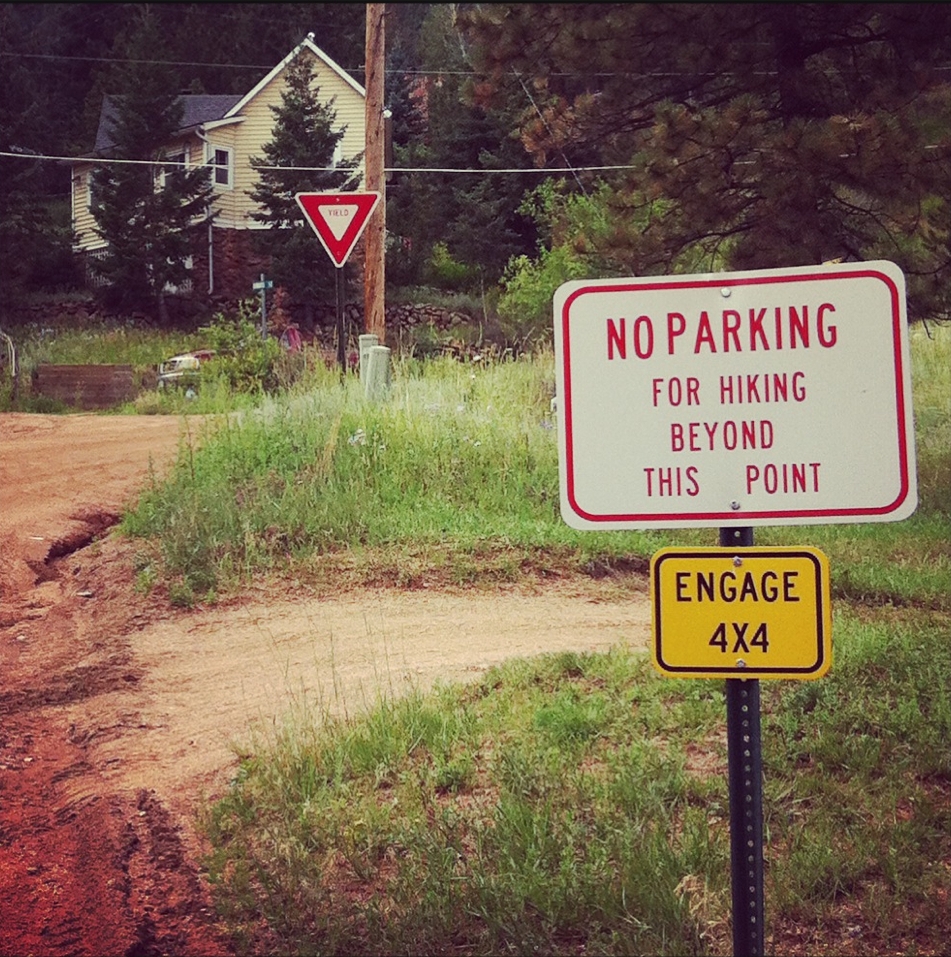Last weekend for #couchto14er training, I hiked the Catamount Trail, a six-mile out-and-back (more appropriately an up-and-down, I suppose) in Green Mountain Falls (a small town west of Colorado Springs), with my dear friend Carrie. I think it was the longest I've ever hiked at one time so far, with an elevation gain of almost 1,900 feet, and it took us about three hours total.
While we trekked along, we came up with a list of random hiking-related questions, and I knew exactly who to go to for answers: Hiking Bob.
Avid outdoorsman Bob Falcone (@hikingbob on Twitter) is a bit of a local celebrity — he's also known as @bobfireman and has been quite helpful over the past "summers of flames" to the community. You can learn more about him at hikingbob.com, or follow his new outdoors blog on the Colorado Springs Independent website here.
Hiking Bob generously agreed to answer all of my questions. Some of the answers will be helpful as I plod along on my #couchto14er journey, and one in particular (as you'll see) will be helpful to accomplishing my #40before41 list. So without further ado...
Dear Hiking Bob:
1. Trekking poles. Yes? No? If yes, single pole or a pair? Advantages? Disadvantages?
I rarely go without one. I usually use just one, mostly for stability. It helps with hopping down from rocks, or on slippery/icy terrain. It also gives me something to poke around with, especially if I think a rattlesnake is nearby. :) If you're going backpacking and carrying a heavy pack, then use two, since they help to take the load off your torso and feet.
2. I spend most of my time looking at my feet, and I feel like I tend to miss the scenery around me. Is this common? If so, how do I see more beyond my feet, and if not, how do I personally get more comfortable with looking up?
Not uncommon and it happens with me, too. Watching your feet isn't bad, since it keeps you from tripping over something and doing a face-plant. I usually just stop every once in a while and look around. If I know the trail well, or can see that it's nice and clear and has no trip hazards, then I keep my head up and see more of the scenery. When I'm on a new trail I tend to stop and look around (or at least slow down and look around) since it's new and I don't want to miss anything.
3. How much water do you recommend carrying?
Most often, I carry a 100oz (approx. 3 liter) hydration pack. I usually don't need a lot of water when I'm on a trail, so I rarely ever go through all of it, even on a long hike. I also have a small 70oz pack for shorter hikes (like the Incline) or when cycling. The larger pack is big enough to carry a number of extras. Mine typically contains at least my personal locator beacon, first aid kit, poncho, water filter, snacks, and a map. For really short, easy hikes, OR hikes where I'll be consistently near water, I carry a CamelbakAll-Clear bottle. It has a UV light in the cap that allows me to take water right from a stream and the UV light purifies the water. On really long hikes, I'll carry the bottle and use it to purify the water and then refill my hydration pack. SO...back to your original question...for most hikers, I usually recommend carrying more water than you think you need until you've done a number of hikes and have gotten an idea of how much water you typically consume. From there you can gauge how much to carry. A little too much is better than running out.
4. Why do hikers heading up have the right away?
Uphill hikers have the right-of-way because of momentum. If I've got a good head of steam (so to speak) and I'm moving up hill at a good pace, I don't want to stop and and ruin that momentum. Getting that momentum back can be hard and tiring. This is why cars driving uphill have the right of way, too. While the "uphill has the right of way" rule is a good one, many times the uphill hiker will stop to rest and let the downhill hiker have the trail. That's fine, but the uphill hiker makes that call.
5. Should I or shouldn’t I have eaten the wild raspberries Carrie found while hiking the Catamount Trail?
Eating the berries is fine if you NEED to eat something (but you should bring snacks with you). Otherwise, the wildlife (bears, deer, etc.) depend on the wild fruit to sustain themselves.
6. And last, but certainly not least, oh guru of local trails, any suggestions for hidden spots to skinny dip?
Hmmm... Skinny dipping? I'm not a skinny dipper (never have...yeah, odd...). There are two semi-secluded places that I can think of. The first is the "punch bowls" in Queens Canyon above the Dorothy Falls. BUT...that area has been closed since the Waldo fire. It's kind of a crapshoot if you'll have the bowls to yourself. When the area was open, guests at the Navigators would frequently hike up there and swim (I never saw anyone skinny dipping), but on other trips up there I wouldn't see anyone. You may want to keep it in mind for when Queens Canyon finally re-opens. There is another spot that may work, but it'll take some work to get to it (and paying the toll on the Pikes Peak Highway). It's within the first 3 miles of the road from the toll booth, so not at high elevation. Getting there would require a map, and maybe a GPS, even though the hike is barely more than a mile. I'll send you the details, but you might have to keep this one to yourself...
Hey, thanks a bunch, Bob! If you've got questions for him, post below and I'll pass along (or find him at any of his social media sites).

